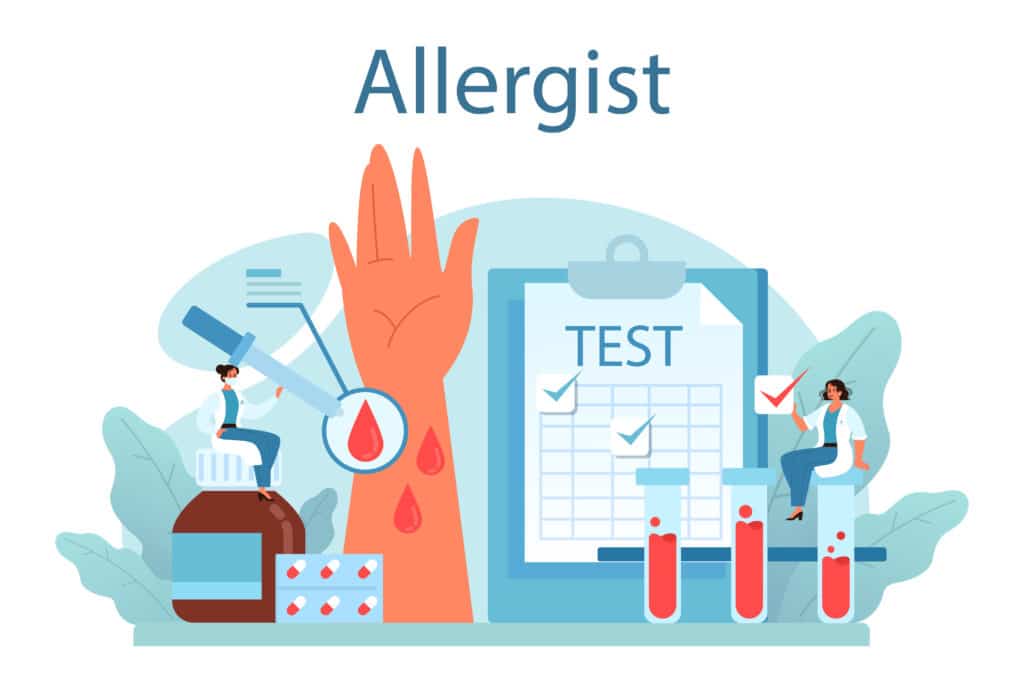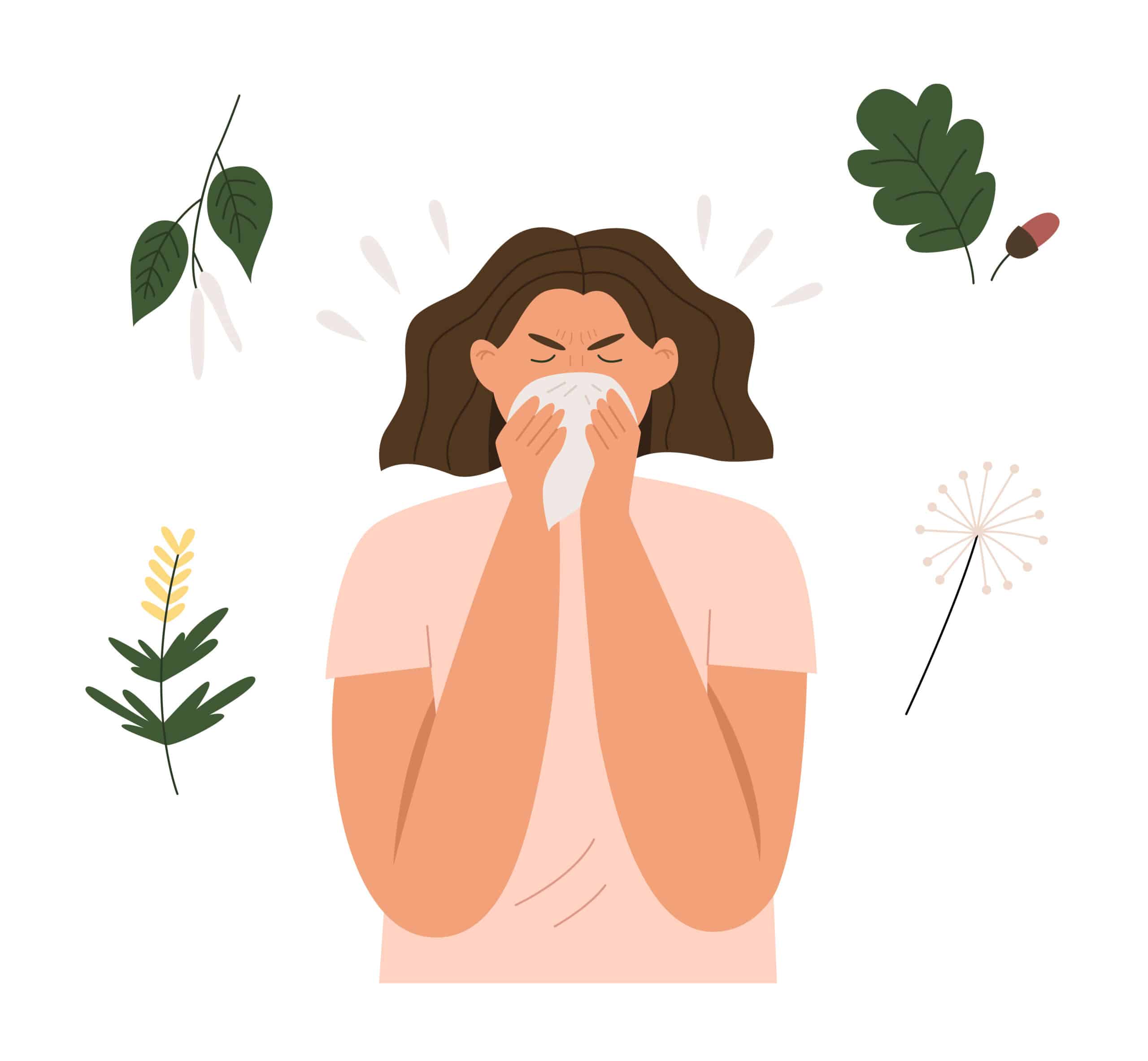Goldenrod Allergy: Can You Be Allergic To Goldenrod
Goldenrod allergy is a topic that gets people talking, especially when the fall season comes around. Goldenrod, a bright yellow plant, is often blamed for sneezing and itchy eyes.
However, most of the time, ragweed, not goldenrod, is causing these problems. Ragweed’s pollen flies through the air in the fall, making many people feel sick with allergies. About 20 percent of folks in America have this type of allergy!
Many think they’re allergic to goldenrod because it blooms simultaneously as ragweed and looks similar. But really, only about 75 out of every 100 people with pollen allergies react badly to ragweed.
On its side, goldenrod prefers to share its heavy pollen with bees and butterflies rather than spreading it through the breeze.
This plant isn’t just pretty; it also helps wildlife and can even be used as medicine by some folks! Understanding which plant makes you sneeze means you can enjoy nature without worry.
Now, let’s explore how all this works together – from insects buzzing around goldenrods to ways we can handle our sniffles better. Keep reading for tips on telling these plants apart and living well during allergy season!
Key Takeaways

- Goldenrod pollen is heavy and sticky, so it usually doesn’t cause allergies.
- Ragweed, not goldenrod, often causes sneezing and itchy eyes in the fall.
- Goldenrods are good for bees and butterflies because they offer lots of nectar.
- It’s rare to be allergic to goldenrod, but some people might react if they’re sensitive to latex.
- To help with allergies, use nasal rinses or herbal teas.
The Truth about Goldenrod and Ragweed Allergies
<image: clip_image001.jpg>
There is a common misconception that goldenrod causes allergies when, in fact, it’s ragweed that is the primary culprit. Understanding the differences between these two plants and their pollen types can help allergy sufferers manage their symptoms more effectively.
Differentiating Between Goldenrod and Ragweed
Goldenrod and ragweed are two plants that often get mixed up. They both have pollen, but they look different and affect people differently. Goldenrod has bright yellow flowers that stand out.
Bees love these flowers because they have lots of nectar. Its pollen is sticky, so it doesn’t fly around in the air much. This means goldenrod’s pollen doesn’t usually make people sneeze or get itchy eyes.
Ragweed looks plain, with greenish blooms that aren’t showy like goldenrod’s yellow ones. The big problem with ragweed is its pollen can bother people with allergies.
Ragweed’s tiny grains of pollen spread easily with the wind, traveling far and wide to cause hay fever symptoms in many allergy sufferers during late summer into fall when these plants bloom together.
Understanding Allergies and Pollen Types
Allergies happen when our bodies think something like pollen is a threat. Our immune system fights these threats, making us sneeze, itch, or get a runny nose. Pollen grains are tiny parts of plants that can cause these allergies.
Wind-pollinated plants like ragweed send a lot of pollen into the air, often leading to allergy problems.
Some plants have flowers that bees love because they’re rich in nectar. These insect-pollinated plants don’t usually make people sneeze because their pollen doesn’t fly around in the wind – it sticks to bugs instead! Goldenrods are like this; they have bright yellow flowers that attract insects but don’t tend to bother allergy sufferers much at all.
Ragweed also blooms simultaneously with goldenrod, which can confuse some people about which plant makes them feel bad.
Goldenrod: A Beneficial Plant for Pollinators
Goldenrod is a beneficial plant for pollinators, playing a vital role in supporting the restoration and conservation of natural habitats. Its abundance of bright, yellow flowers is an essential nectar source for bees, butterflies, and other pollinating insects.
This makes it an important component in promoting biodiversity and maintaining healthy ecosystems.
Importance of Goldenrod for Restoration Work
Goldenrod plays a big role in bringing back healthy spaces in nature. Its roots hold the soil well, which can stop erosion and help other plants grow. These strong plants also clean up areas that have been messed up by adding good stuff back into the ground.
This helps make homes for bugs and animals again.
Adding goldenrod to an area brings many helpful insects. Bees and butterflies love their nectar and pollen. When these pollinators move from flower to flower, they also help other plants grow seeds.
So, planting goldenrods can start a chain of growth that makes nature rich with life once more!
Benefits for Wildlife Conservation
Goldenrod plays a vital role in wildlife conservation by providing food and habitat for numerous pollinators. It attracts bees, butterflies, and other beneficial insects, supporting biodiversity.
This makes goldenrod an essential plant for restoring and maintaining healthy habitats for wildlife.
Moreover, as goldenrod is primarily insect-pollinated, it does not trigger allergies like ragweed pollen. This means that promoting the growth of goldenrod can benefit both wildlife and humans by providing essential ecological services without causing allergic reactions.
Debunking the Goldenrod Allergy Myth

Contrary to popular belief, it is rare to be allergic to goldenrod. The plant’s pollen is heavy and sticky, making it less likely to cause allergic reactions than ragweed. While ragweed often gets blamed for hay fever symptoms, goldenrod is unfairly accused due to blooming at the same time as ragweed.
The Role of Ragweed in Hay Fever
Ragweed is a common cause of fall allergies. It releases billions of pollen grains, which trigger allergic reactions, especially in people with hay fever. The pollen from ragweed can lead to symptoms like sneezing, runny nose, itchy eyes, and congestion.
Ragweed’s allergenic properties make it a significant contributor to seasonal allergies.
Moreover, those allergic to ragweed are more likely to develop an allergy to goldenrod due to their close relation. Because both plants often grow in the same areas and bloom simultaneously, they can exacerbate hay fever symptoms.
Rare Cases of Goldenrod Allergies
Some individuals may have rare allergies to goldenrod due to its high latex content. Although uncommon, certain people can experience allergic reactions when in contact with goldenrod pollen or plants.
However, it’s essential to note that goldenrod is not the primary culprit for causing seasonal allergies, as its pollen does not spread irritants like ragweed. These rare cases of goldenrod allergies should be approached with caution and awareness, especially for those sensitivities to latex or other related allergens.
Managing Allergies and Appreciating Nature
Discovering natural remedies for allergies and learning to coexist with nature’s pollinators can help manage symptoms. By identifying goldenrod and ragweed along with their distinct features, individuals can take steps to minimize exposure and appreciate the benefits of these plants in the ecosystem.
Tips for Identifying Goldenrod and Ragweed
- Look for small, bright yellow flower clusters on single woody stems to identify goldenrod.
- Goldenrod often grows along roadsides and in open fields, making it easily identifiable in these areas.
- Check for the absence of conspicuous flowers or clusters when distinguishing ragweed from goldenrod.
- Ragweed tends to grow in open fields and along roadsides like goldenrod, but its appearance is different.
- Ragweed’s greenish flowers are less showy than the bright yellow blooms of goldenrod.
Natural Remedies for Allergies
- Goldenrod flower and leaf can be used for allergies, sinus infections, colds, and urinary tract infections due to their medicinal benefits.
- To manage allergies naturally, consider using saline nasal rinses to reduce nasal congestion and irrigation of sinuses.
- Consuming local honey may help build tolerance to local pollen.
- Herbal teas such as chamomile, peppermint, or ginger can relieve allergy symptoms.
- Steam inhalation with eucalyptus oil can alleviate nasal congestion and promote easy breathing.
- Neti pots can be used for nasal irrigation with a saline solution to clear allergens from the nasal passages.
Learning to Coexist with Nature’s Pollinators
Goldenrods play a crucial role in the ecosystem, supporting pollinators like bees and butterflies. Their heavy pollen is not easily carried by the wind, reducing the risk of allergies for many people.
By understanding the benefits goldenrods offer nature, we can learn to appreciate and coexist with these vital pollinators while managing potential allergies effectively.
As we embrace natural remedies and identify goldenrod from ragweed, we can foster a harmonious relationship with these important elements of our environment. This includes recognizing the significance of insect-pollinated plants like goldenrod in sustaining biodiversity and supporting our overall well-being.
FAQs
1. What is goldenrod, and can it make you sneeze?
Goldenrod is a common plant with yellow flowers that grows in many parts of the United States. Some people think it makes them sneeze, but ragweed, a different plant blooming simultaneously, often causes allergies.
2. Are there lots of kinds of goldenrod?
Yes! There are about 130 species of goldenrod plants. They’re native to North America,, and some are also found in Europe.
3. How do you know if you’re allergic to goldenrod?
If your nose runs or you start sneezing around when goldenrod blooms, usually in late summer, you might have an allergy. But most times, when people think they’re allergic to goldenrod, they have ragweed allergies instead.
4. Can touching goldenrod cause skin problems?
Touching some types of plants can give certain folks a rash called allergic contact dermatitis because their skin doesn’t like something on the plant’s surface.
5. Does goldenrod spread its pollen far through the air?
Nope! Goldenrod’s pollen doesn’t travel much by wind because it is sticky and heavy. Bees mostly move this pollen from one flower to another while looking for food.
6. Are any other health issues linked with being around goldenrod?
Some research shows possible links between breathing problems like asthma and being near flowering plants such as Solidago—the fancy name for the group including all those many types of Goldenrods.

